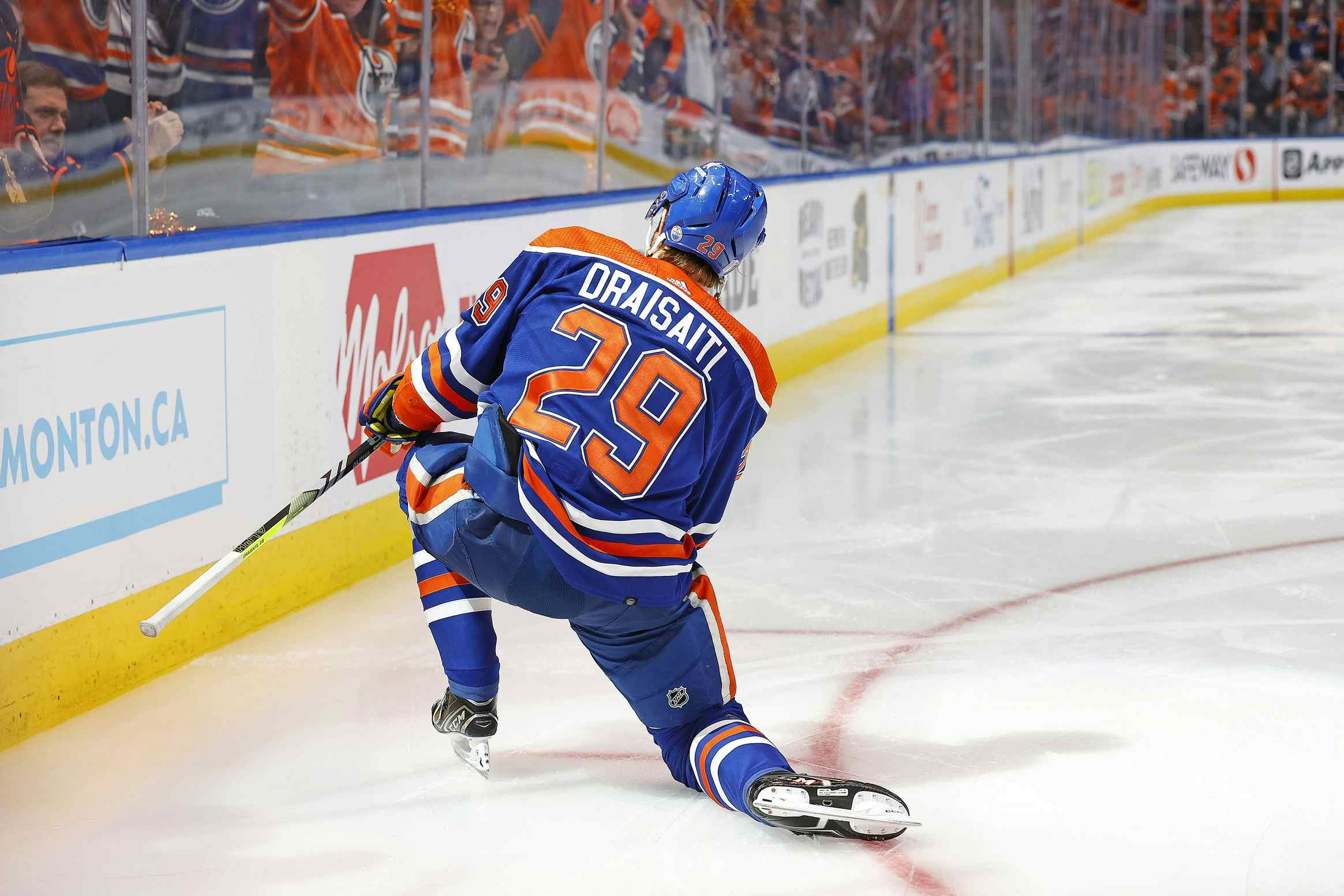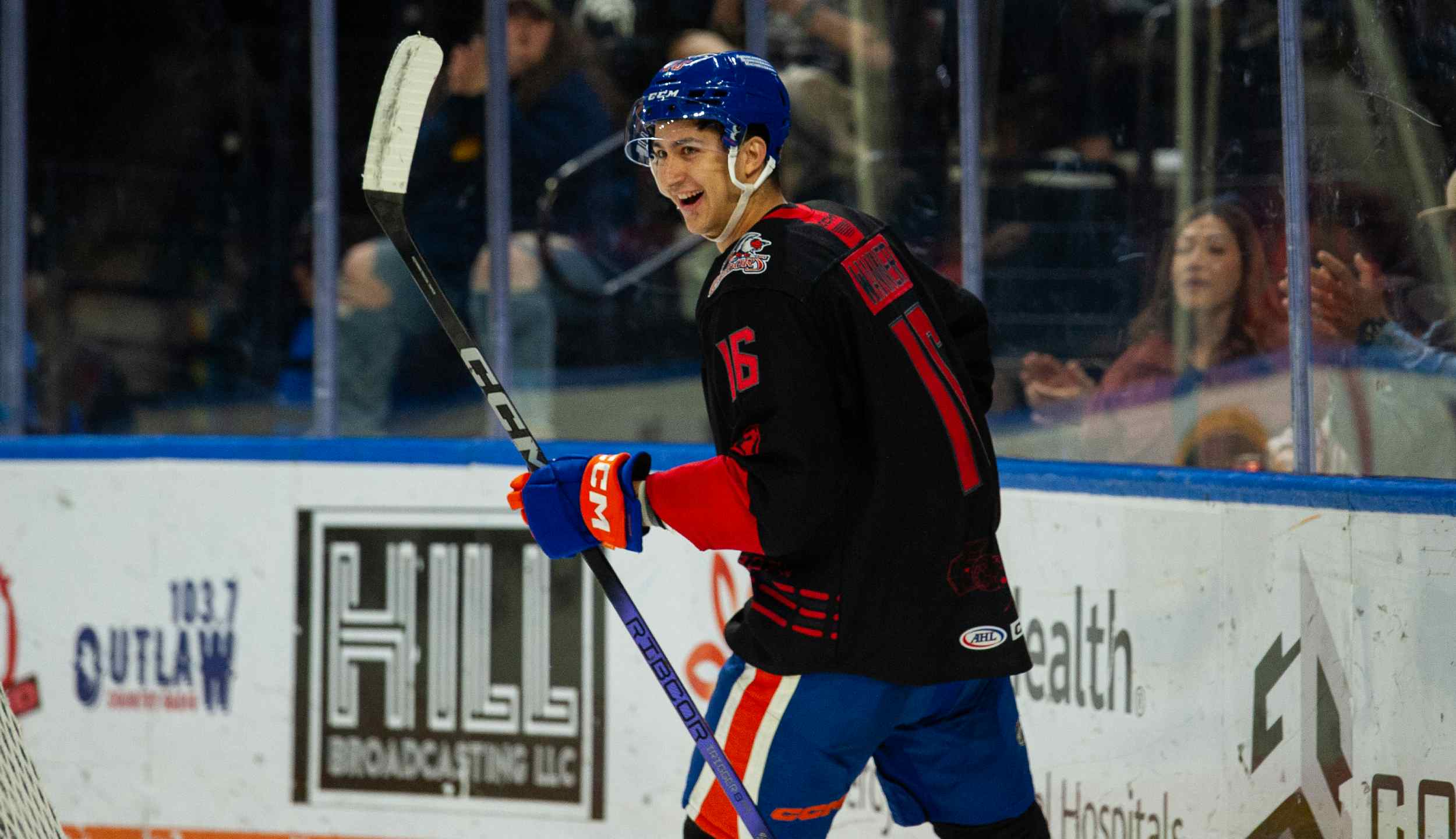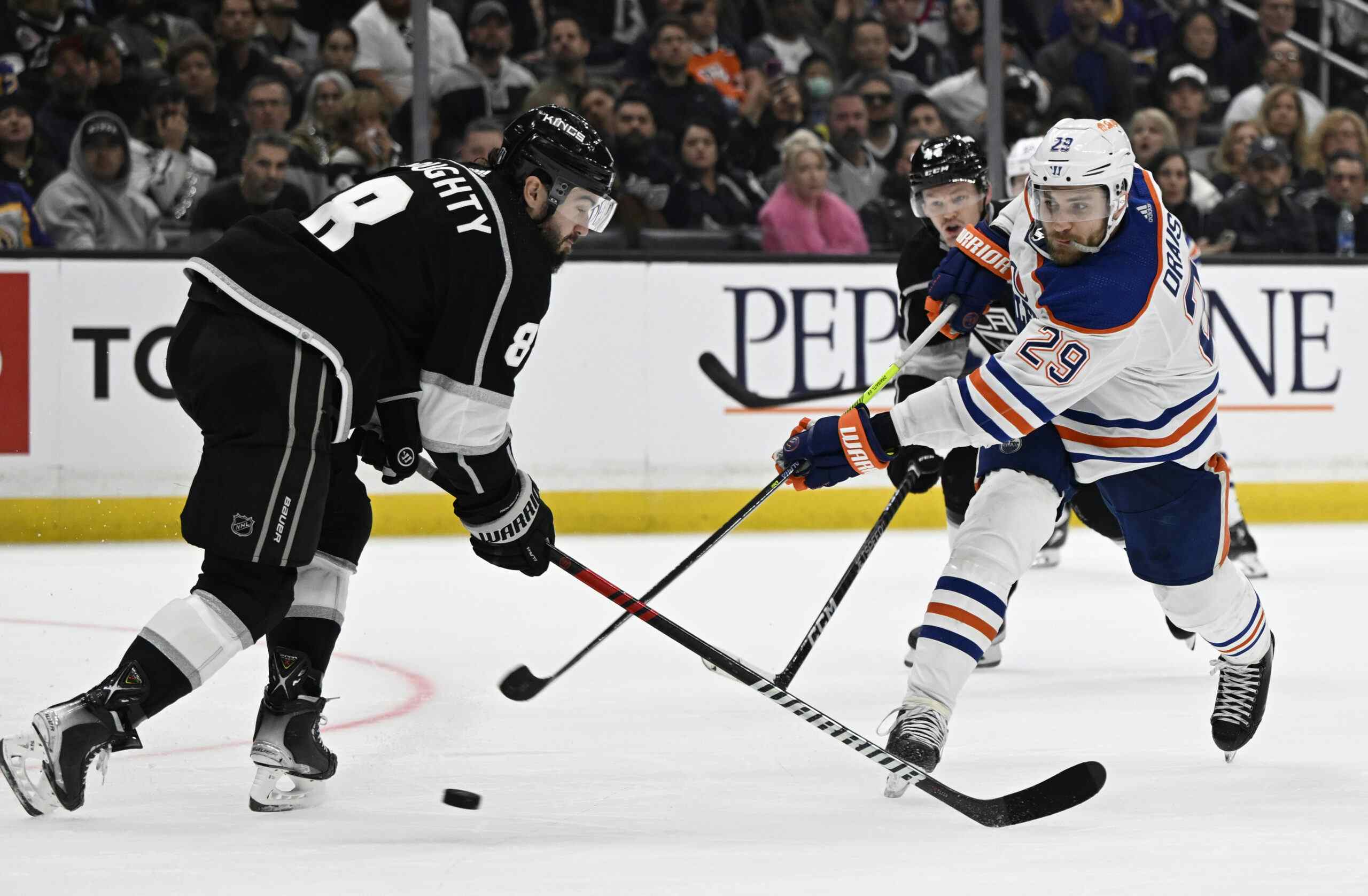2014-15 Goals Projection: Mark Arcobello & Leon Draisaitl

We’ve talked the centres to death, and it’s abundantly clear that nobody has much confidence in the duo of Arcobello and Draisaitl handling the two scoring lines not centered by Ryan Nugent-Hopkins.
How many goals can we expect from the two, and how does the Oilers’ top-nine forward group compare to the best teams in the West in terms of projected goal-scoring?
For those interested in a brief explanation of this series, see the first post in it (on Taylor Hall). Just a reminder about two things: I’m not projecting breakout seasons here (though they happen) and “comparables” are just the players inhabiting roughly the same roster position on the eight Western Conference playoff teams, and that empty-net goals are not included.
Games & Usage

We have to switch our technique a little here, given that Draisaitl is coming out of the WHL (we have no NHL history to draw on) and that Arcobello has only spent half a season in the NHL, which makes it difficult to project him forward.
Both players should see reasonably significant minutes at even-strength. Like Lowetide, I don’t really believe that either will win the No. 2 centre job outright, so there will likely be some nights when Draisaitl’s in the role and others where Arcobello’s there (and likely more featuring Draisaitl). It’s a similar story on the power play. Arcobello’s also going to get time on the penalty kill, and given the other options out there it might be a significant amount of time. Draisaitl probably gets his feet wet on the PK, but not much more.
Games played is a total shot in the dark. Draisaitl will play whenever he’s healthy; I have him tabbed for 70 games total but there’s an incredible range of outcomes (anywhere from 0-82). Arcobello had some health problems and some healthy scratch problems last year, and could catch both again this year (I’m guessing there will be nights the Oilers want size up the middle).
Goal-Scoring Curve
Again, we’re forced to switch up our technique because there just isn’t much NHL track record between these two guys.
We’ll start with Draisaitl because we’re doing a straight-up WHL-to-NHL translation with him. Given historical rates (via Hockey Abstract) last year’s production equates to something in the 12 goals range; say nine at evens and three on the power play. This is just back of the envelope stuff here, because we don’t have enough data on the WHL to do more than that.
Arcobello played 41 games in the NHL last year and scored four goals; he then followed that up by scoring 10 goals in 15 AHL games. His expected 82-game NHL scoring translation (again via Hockey abstract) over his AHL career works out to about 14 goals, while last year he was on pace for just eight; I’d be inclined to split the difference which works out to 11 goals over 82 games or eight goals over 60. Say six of them at evens, two on the power play.
Total: 20 combined goals. That’s one less than we have Nugent-Hopkins down for on his own.
Comparables
- Anaheim: Nick Bonino (22), Mathieu Perreault (18)
- Chicago: Andrew Shaw (20), Michal Handzus (4)
- Colorado: Paul Stastny (22), John Mitchell (10)
- Dallas: Cody Eakin (15), Shawn Horcoff (6)
- Los Angeles: Mike Richards (11), Jarret Stoll (8)
- St. Louis: Patrik Berglund (13), Vladimir Sobotka (9)
- San Jose: Logan Couture (20), Joe Thornton (11)
- Minnesota: Mikael Granlund (8), Kyle Brodziak (7)
Average: 26 goals.
The gap here wasn’t nearly as big as I expected, as teams like Chicago and Minnesota leaned hard on offence from the wings, and the Kings had terrible offensive totals in the regular season. Of course, we’re also only catching part of the equation by looking at goal totals; if Draisaitl scores 12 and Thornton puts home 11 that doesn’t make the young German a better pivot today than the old guy.
As for the comparison? There are some caveats – we’re projecting pretty good health, we’re ignoring goals against, and we haven’t gotten to the gang that can’t shoot straight on the bottom of the Oilers’ roster or its defensive group – but things look pretty good. We have the Oilers top line down for 80 goals, vs. 79 from the average playoff team last year. The second line clocks in at 52, which matches the totals of our average playoff team. And Edmonton’s third line, thanks entirely to Yakupov’s lovely number, is pegged for 39 goals – eight more than our average playoff team.
The key takeaway here, however, is that with good health the Oilers’ top-nine forward group should be competitive offensively with top western teams.
RECENTLY BY JONATHAN WILLIS
Recent articles from Jonathan Willis





